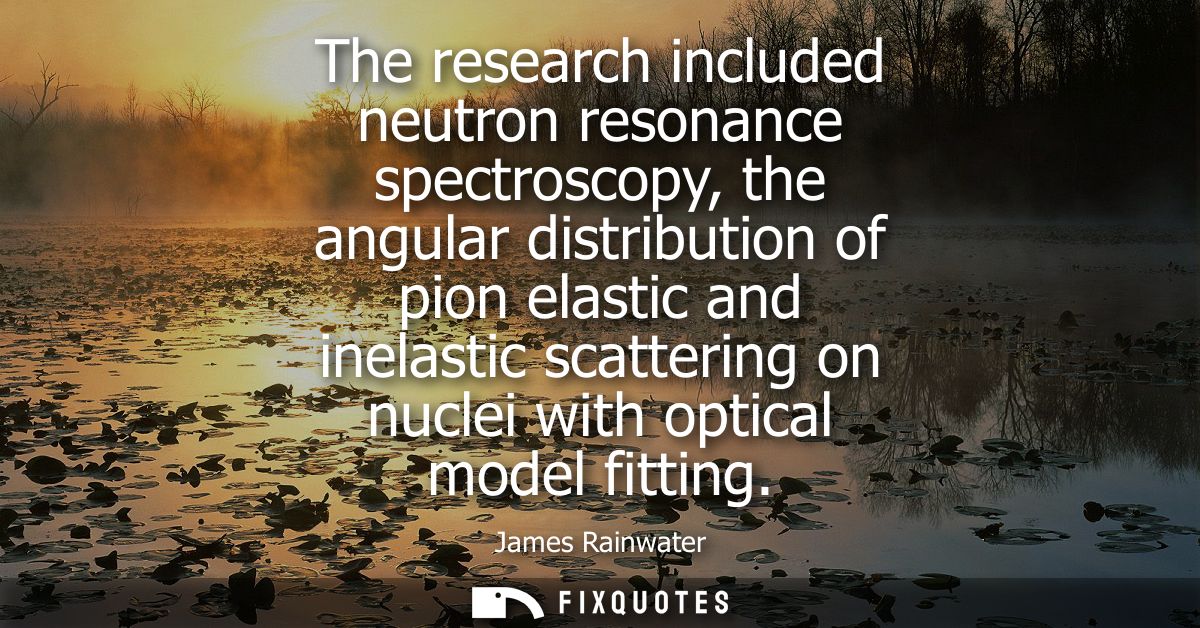"The research included neutron resonance spectroscopy, the angular distribution of pion elastic and inelastic scattering on nuclei with optical model fitting"
About this Quote
Rainwater points to a program of nuclear-structure research that combines precise measurements with phenomenological modeling. Neutron resonance spectroscopy exploits the fact that slow neutrons are captured by nuclei at discrete energies corresponding to quantized compound-nuclear states. By scanning neutron energy, often via time‑of‑flight, one observes sharp increases in cross section with Breit–Wigner shapes. The positions, widths, and spin-parity assignments of these resonances reveal level densities, coupling strengths, and aspects of the nuclear potential, including the influence of deformation and pairing.
Complementing this, scattering experiments with pions (π mesons) probe the nucleus through the strong interaction. Measuring angular distributions for elastic scattering maps how incoming pions are deflected without changing the nuclear state, encoding interference among partial waves and the size and diffuseness of the nuclear matter distribution. Inelastic scattering records events where the nucleus is excited, rotational or vibrational modes, single-particle transitions, thereby exposing collective dynamics and shell structure. The differential cross sections as functions of angle provide stringent constraints because the diffraction patterns and minima are highly sensitive to phase shifts.
“Optical model fitting” ties these data together. In the optical model, the complicated many-body interaction is replaced by an effective, complex potential: the real part focuses the projectile, while the imaginary part accounts for absorption into nonobserved channels. By adjusting potential parameters, radius, diffuseness, depth, spin–orbit, isoscalar and isovector terms, researchers reproduce the measured angular distributions across energies and targets. Consistency between neutron resonance parameters and pion optical potentials strengthens confidence in the extracted nuclear radii, surface thickness, and deformation.
Taken as a whole, the program reflects a strategy: use complementary probes and a unifying model to infer the invisible architecture of nuclei. Resonances provide the discrete energy spectrum; pion scattering supplies spatial and dynamical information; the optical model furnishes the bridge from data to structure. Together they calibrate theories of the nuclear force.
About the Author

